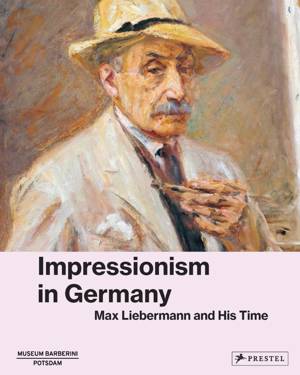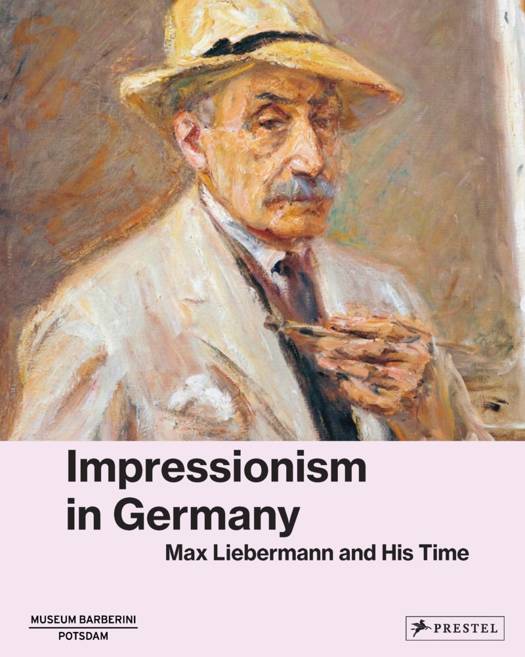
- Afhalen na 1 uur in een winkel met voorraad
- Gratis thuislevering in België vanaf € 30
- Ruim aanbod met 7 miljoen producten
- Afhalen na 1 uur in een winkel met voorraad
- Gratis thuislevering in België vanaf € 30
- Ruim aanbod met 7 miljoen producten
Zoeken
Impressionism in Germany
Max Liebermann and His Times
Michael Philipp, Nerina Santorius, Ortrud Westheider
Hardcover | Engels
€ 53,50
+ 107 punten
Omschrijving
This stunning exhibition catalog celebrates Max Liebermann, the pioneering figure of German Impressionism, whose own painting and artistic leadership transformed the nation's cultural landscape.
As a groundbreaking painter and head of the Berlin Secession, Max Liebermann championed modernism and introduced French Impressionism to the German Empire. His influence reached far beyond Berlin, sparking a diverse movement that flourished in cities such as Dresden, Stuttgart, Karlsruhe, and Munich. Focusing on Liebermann's life and legacy, the catalog also examines his achievements as a collector and advocate for the avante-garde. It showcases his celebrated masterpieces alongside works by prominent peers like Max Slevogt and Lovis Corinth, as well as contributions from underappreciated figures such as Philipp Franck and Dora Hitz, capturing the expansive scope of the era. Women painters, including Charlotte Berend-Corinth and Maria Slavona, are also featured, underscoring their role in shaping German Impressionism. Divided into nine thematic chapters, the book offers a wide-ranging perspective, including topics such as the artistic exchange between France and Germany; the historical importance of Liebermann's villa at Wannsee as a site of cultural memory and creative legacy; the role of Jewish patrons in fostering Germany's embrace of French art; and the challenges Liebermann faced during the rise of the Nazi regime. Lavishly illustrated and expertly curated, this catalog provides an essential study of Max Liebermann as the central figure of German Impressionism while situating his work within the broader artistic and historical contexts of the late 19th and early 20th centuries.
As a groundbreaking painter and head of the Berlin Secession, Max Liebermann championed modernism and introduced French Impressionism to the German Empire. His influence reached far beyond Berlin, sparking a diverse movement that flourished in cities such as Dresden, Stuttgart, Karlsruhe, and Munich. Focusing on Liebermann's life and legacy, the catalog also examines his achievements as a collector and advocate for the avante-garde. It showcases his celebrated masterpieces alongside works by prominent peers like Max Slevogt and Lovis Corinth, as well as contributions from underappreciated figures such as Philipp Franck and Dora Hitz, capturing the expansive scope of the era. Women painters, including Charlotte Berend-Corinth and Maria Slavona, are also featured, underscoring their role in shaping German Impressionism. Divided into nine thematic chapters, the book offers a wide-ranging perspective, including topics such as the artistic exchange between France and Germany; the historical importance of Liebermann's villa at Wannsee as a site of cultural memory and creative legacy; the role of Jewish patrons in fostering Germany's embrace of French art; and the challenges Liebermann faced during the rise of the Nazi regime. Lavishly illustrated and expertly curated, this catalog provides an essential study of Max Liebermann as the central figure of German Impressionism while situating his work within the broader artistic and historical contexts of the late 19th and early 20th centuries.
Specificaties
Betrokkenen
- Auteur(s):
- Uitgeverij:
Inhoud
- Aantal bladzijden:
- 256
- Taal:
- Engels
Eigenschappen
- Productcode (EAN):
- 9783791376257
- Verschijningsdatum:
- 30/11/2025
- Uitvoering:
- Hardcover
- Afmetingen:
- 240 mm x 300 mm
- Gewicht:
- 1992 g

Alleen bij Standaard Boekhandel
+ 107 punten op je klantenkaart van Standaard Boekhandel
Beoordelingen
We publiceren alleen reviews die voldoen aan de voorwaarden voor reviews. Bekijk onze voorwaarden voor reviews.











